
Kicking Back with the AI Writing Tools Chit-Chat: Ups and Downs
Looking for alternatives to Jasper AI? Check out this comprehensive guide that walks you through the best Jasper AI competitors currently on the market.
When we get chatting about AI writing tools, it's pretty much like opening a bag of mixed candies - you never know what you might get. And not everything is as sweet as it looks. Take Jasper AI, for example. At one point, it was the shining star in the vast sky of AI writing tools. But lately, it seems to have tripped over its shoelaces.
Jasper's popularity is dropping. Its prices are going down and more customers are choosing to unsubscribe, employees are getting laid off. It appears that the high hopes once held for this tool have hit a bit of a reality check. So what went wrong? Are there some hidden bumps we've missed? Or maybe Jasper just couldn't keep up with the fast-paced race?
AI writing tools should be more than just fancy word factories – they should be smart, user-friendly, and bring something new and exciting to the table. They should make our lives easier and more productive, not leave us scrabbling around looking for plan B.
Let's grab our detective glasses and dive deeper into the world of AI writing tools. We'll focus specifically on Jasper and its current speed bump. We'll try to figure out what makes an AI tool stand out from the crowd and why they're so handy in today's fast-moving digital playground.
The Current State of Jasper AI
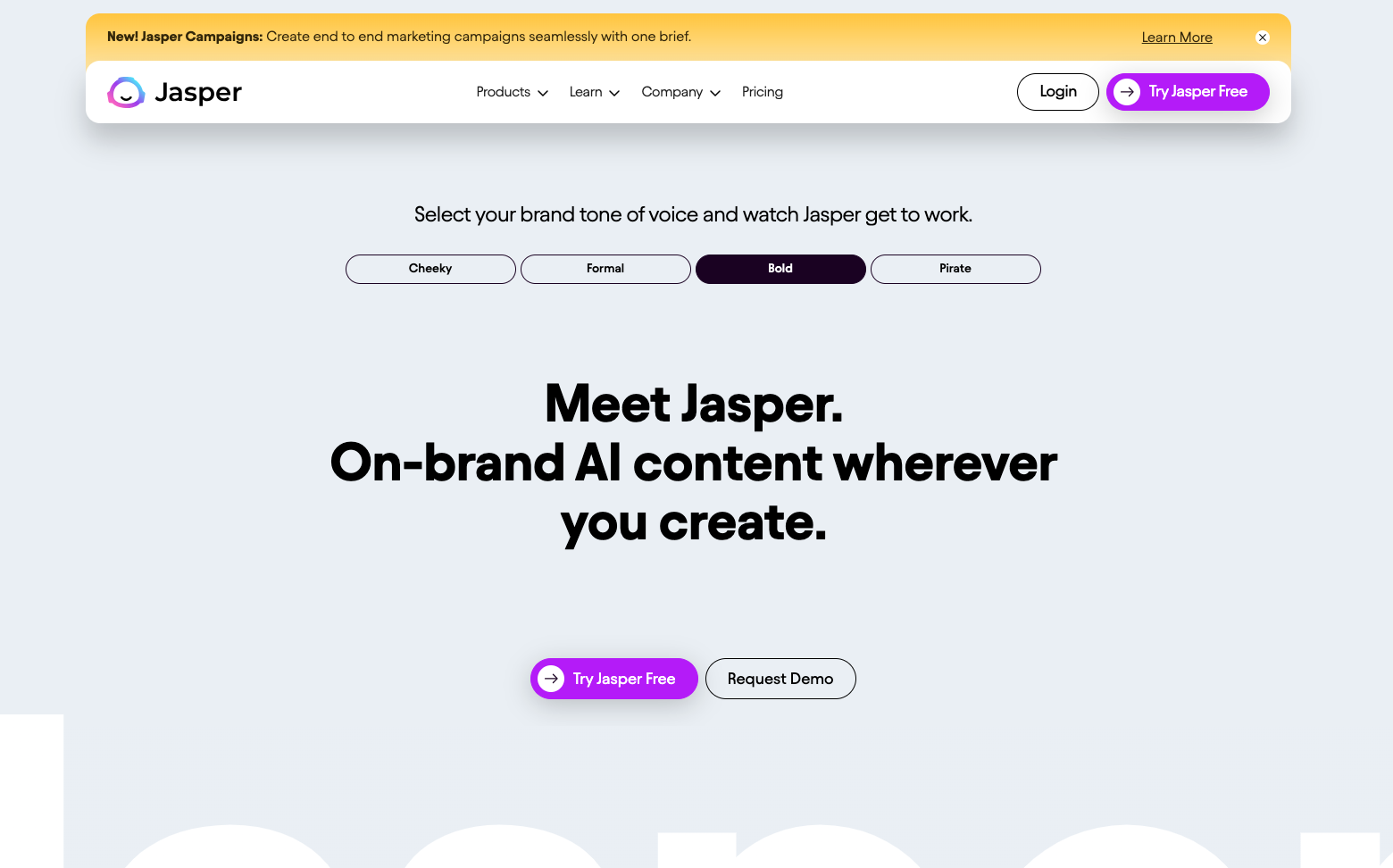
Remember when Jasper AI was the bee's knees of AI writing tools? Well, recent times have shown a bit of a tumble for our dear friend. Once the life of the party in the tech world, it’s now feeling rather like Cinderella after midnight.
So, what is happening to Jasper AI? In our Jasper AI review, users seem to have two main complaints:
- Ease-of-use: In the fast-paced tech world, a slick user interface can be your golden ticket. Regrettably for Jasper, its UI hasn't been winning any awards. Users have found it less than intuitive and are turning elsewhere for a more seamless experience.
- Output Quality: Then there's the issue of content quality. Despite being backed by OpenAI's GPT (impressive, right?), our friend Jasper appears to be falling short in producing high-quality content compared to other contenders such as Junia AI. This dip in quality has given competitors an edge and made them more appealing to users who demand nothing but the best.
The aftermath? Well, let's just say it's not been pretty. We’re talking major price cuts and users waving goodbye faster than you can say "AI." especially with their recent layoffs.
"Jasper isn't the popular AI writer anymore; prices are dropping and people are unsubscribing."
This situation is a wake-up call for all all technology businesses, especially those that are starting to use AI, it's not just enough to have cool technology. Your product needs to hit all the sweet spots for its users. That means delivering high-quality results and making sure it’s easy-peasy to use.
In a fast-changing AI landscape where new AI tools pop up every day wanting to be noticed, staying important isn't just about having fancy technology. It's about knowing what your users need and making sure your product meets those needs well.
So here’s some food for thought for all you AI startups out there: Don’t just piggyback off someone else's tech smarts; make sure you're offering real value and hitting those user expectations out of the park. That’s how you'll build unshakeable strongholds within your niche industries.
While Jasper still has some tricks up its sleeve, it needs to pull up its socks if it wants to claw back lost ground in this fiercely competitive AI writing market.
Why We Need Better AI Writing Tools
The Limitations of Current AI Tools like ChatGPT
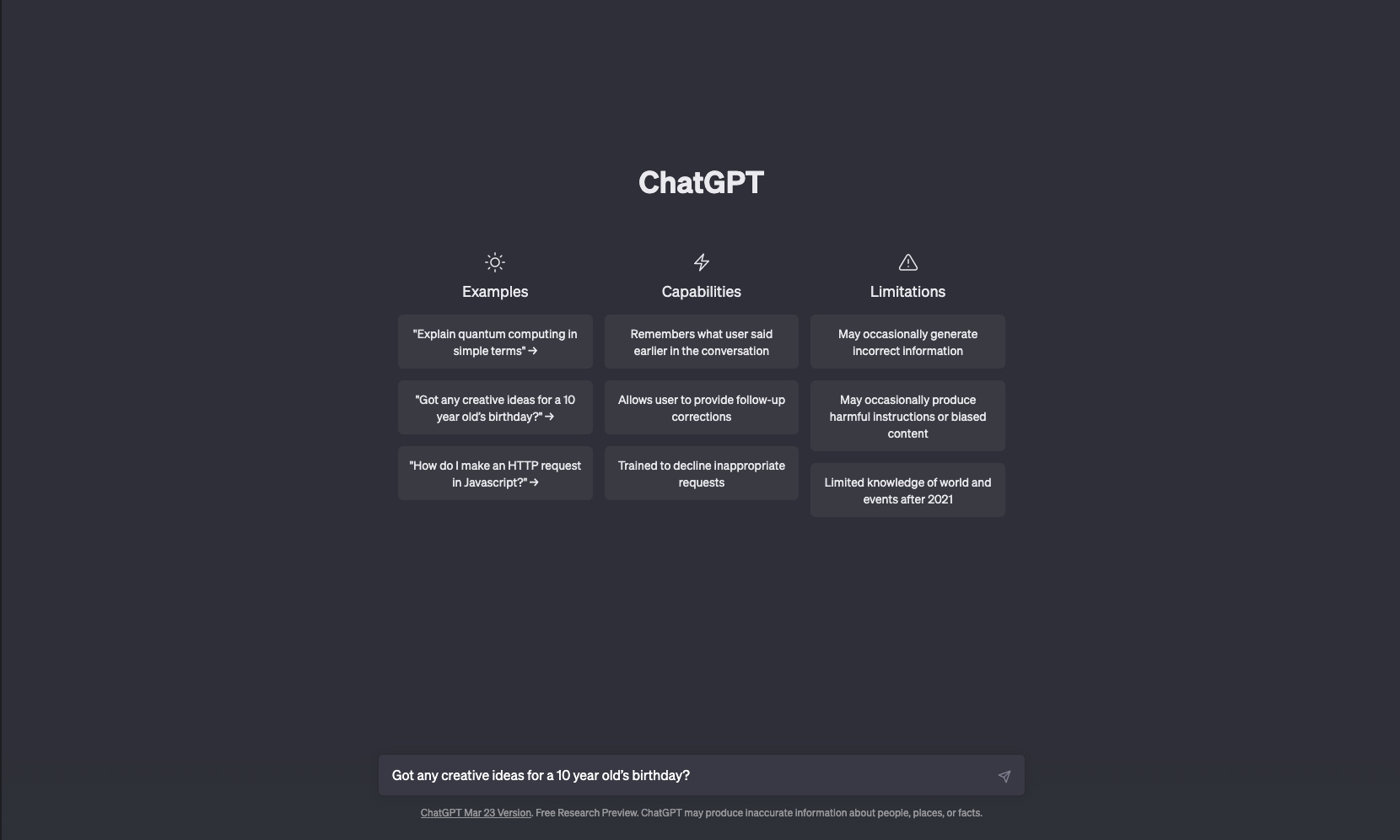
Even though AI has come a long way in creating content, there's still a lot we can do to make it better. Right now, tools like ChatGPT are like chatbots. They can talk and create text that sounds human-like, but they don't cover everything you need when you're making content.
These chatbot-like tools often mean the user has to do more work themselves. They're good at starting off responses or making simple content, but they don't understand the complexities needed to fully automate creating content.
That's why we need better AI writing tools. These tools go beyond just talking and making basic content. They include things like understanding context, analysing meaning, automatically editing and proofreading. These tools give a total solution for people creating content by cutting down on manual work and offering a smoother experience.
To sum up, while tools like ChatGPT are good at some aspects of creating content, they don't meet all the needs of people who create content. We need better AI writing tools that can handle the more complex parts of creating content, reducing manual work and increasing productivity. This is what we expect to see in the next wave of AI writing technology.
Why We Need Better AI Writing Tools
So why do we need these new and improved AI writing tools? It comes down to a simple question: Would you rather spend hours working on creating content or have most of this work done by a smart assistant?
AI writing tools have the potential to change how we approach creating content by making it faster, simpler, and more efficient. They can help us get past writer’s block, come up with unique ideas, create content in different languages and write SEO-friendly articles:
- Getting Past Writer’s Block: AI writing tools can inspire creativity by giving ideas and prompts.
- Coming Up With Ideas: These tools can suggest topics or viewpoints that might have been missed.
- Creating Content in Different Languages: Thanks to their ability to work in different languages, AI tools let users easily create content in various languages.
- Writing SEO-friendly Content: These platforms guide users towards creating material that's SEO-compliant.
But remember, success isn't just about exciting features. A tool that truly transforms also needs to offer a unique user experience that sets it apart from its competitors — something several AI writing tools including Jasper have struggled with.
Improving User Experience
"User experience is more than just looks—it's about creating solutions that deeply connect with users."
Many content creation apps stumble by focusing on technical features while ignoring an intuitive and easy-to-use user experience (UX). Users want tools that are easy-to-use and reliable — things some current options struggle with.
The Future of AI Writing Tools
The world of AI writing tools is at an exciting crossroads — Jasper's struggles have opened up space for others. But which similar tools — ones that just wrap OpenAI without any innovative features—are going to follow Jasper's path? Could Rytr or other similar platforms providing little value compared to using ChatGPT directly be next?
This industry changes quickly and is full of innovation — no one company has yet taken total control.
How to Evaluate AI Writing Tools
To get the most out of an AI writing tool in your workflow, you need to tell the difference between a high-performing, innovative tool and an average one. Let's look deeper into the key criteria that play a big role in assessing these tools.
1. A Great UI/UX That Beats Existing Tools
In the highly competitive landscape of AI writing tools, a superior User Interface (UI) and an outstanding User Experience (UX) are no longer just nice-to-haves; they are absolute essentials. The mission should be to design and implement a UI/UX that is so unparalleled, it not only meets users' needs but also sets a new benchmark for competitors to aspire to.
"The ideal AI writing tool needs to boast a UI/UX design that makes complex tasks like SaaS marketing, blog post creation or long-form content generation feel as smooth as sailing on a calm sea."
To achieve this level of user satisfaction, several key features need to be finely tuned and integrated into the product design:
- Simple Navigation: Users should be able to move through the application seamlessly, with minimal clicks and without getting lost in complex navigation structures. The goal is to guide users intuitively from one feature to another, enhancing their efficiency and productivity.
- Easy-to-Understand Features: The tool's functionalities should be self-explanatory, requiring minimal effort on the user's part to understand how they work. This can be achieved by incorporating tooltips, user guides, and other helpful resources within the application.
- User-Friendly Design: The overall look and feel of the software play a crucial role in engaging users. It should offer a visually appealing interface that is clean, organized, and free from clutter or unnecessary elements.
- Consistent Language & Clear Labels: All labels, commands, menus should use consistent language that resonates with your target users. They should be clear and concise to avoid any misunderstandings or confusion.
When designing an AI writing tool or any SaaS product for that matter, putting users at the heart of your design strategy can go a long way in creating a successful product that delights users while setting new industry standards.
2. Groundbreaking Tech That Surpasses Previous Language Models

The foundation of any noteworthy AI writing tool lies in its technological innovation. The strength and sophistication of the underlying technology are what set advanced AI writing tools apart from their competitors. It's insufficient to merely rely on existing Language Models like GPT-3.0. The tech powering the tool should be robust and innovative, capable of adding substantial value even before these language models are incorporated.
"Cutting-edge tech could include advanced text analytics, smart strategies for optimising content, semantic understanding, and more."
Advanced Text Analytics
The AI writing tool should have an advanced text analytics capability that provides a deeper context-aware analysis of the text. This includes syntactic analysis for understanding sentence structures, semantic analysis to grasp the meaning behind words, and pragmatic analysis to interpret how context influences meaning.
Smart Strategies for Optimizing Content
Content optimization is another area where technologically advanced AI writing tools can differentiate themselves. These tools should employ intelligent strategies for optimizing content, such as SEO keyword integration, readability scoring and adjusting tone according to target audience demographics.
Semantic Understanding
An essential aspect of any AI writing tool is its ability to comprehend semantics - the meanings that words and sentences convey in different contexts. A tool with strong semantics understanding can generate more relevant and coherent content.
The ideal AI writing tool should use this superior tech to simplify all stages of creating content - from brainstorming ideas to drafting initial versions and refining them into polished pieces ready for publication. This would involve features like:
- Idea Generation: The tool should provide a platform for brainstorming ideas using AI-powered suggestion mechanisms.
- Drafting: The system should be capable of generating rough drafts based on user inputs, further reducing the effort required in the initial stages.
- Refinement: The AI should offer real-time suggestions for improving the quality of drafts, including grammar checks, style corrections, tone adjustments, etc.
By leveraging these cutting-edge technologies, an AI writing tool can not only make content creation easier but also elevate the quality and effectiveness of the produced content.
3. Utilizing User Data to Customize AI Writing Solutions
The power of personalization cannot be overstated when discussing the efficacy of AI writing tools. A generic, one-size-fits-all approach can no longer cut it in a world where users crave bespoke solutions tailored to their unique needs.
By smartly harnessing user data, an AI writer can transcend the limitations of being a mere language model to become a sophisticated assistant that comprehends and caters to the user's specific requirements. This level of customization is what sets apart industry-leading AI writing tools.
"Imagine having an AI assistant that not only comprehends your brand voice but can flawlessly replicate your style and tone."
This dream is becoming a reality with the integration of advanced machine learning algorithms capable of learning from user interactions and progressively refining their outputs. The benefits of such a personalized AI writer are multifold:
- Industry-Specific Recommendations: An AI writing tool, leveraging user data, can provide insights and recommendations specific to the user's industry or field. For instance, a healthcare professional using an AI writing assistant would receive content enriched with relevant medical terminology and adherence to compliance guidelines. Similarly, a digital marketer might get suggestions on trending keywords or SEO strategies pertinent to their niche. These industry-specific inputs elevate the utility of the AI writer from a generic text-generator to a savvy industry expert.
- Understanding Brand Voice: A truly effective AI tool learns to comprehend and emulate your unique brand voice, ensuring a consistent tonality across all written communication. This could range from email correspondence and blog posts to social media updates. However, it's important to understand that not all tools claiming to offer 'brand voice' capabilities truly deliver on this promise including Jasper AI. They all operate by merely providing an extra prompt to the AI with instructions like "Hey, write in this style for me". Such systems don't deeply analyze or utilize your data, which leads to output that can be generic and unpredictably inconsistent.
- Style Customization: Advanced personalization goes beyond understanding your brand voice - it adapts to match your individual writing style. Whether you prefer a formal tone for business proposals or a conversational one for engaging blog posts, an ideal AI writer should adjust its output accordingly. Imagine having an AI tool that knows when you need a scholarly article with complex sentence structures and professional jargon versus when you require an easy-going, relatable blog post.
- Content Optimization: As the tool collects data about user preferences and past interactions, it can recommend improvements for better engagement, SEO ranking, or readability. For example, if the user frequently requests edits to make content more concise, the system should learn this preference over time and start delivering more succinct drafts initially. Or if SEO is a priority for the user, the system could suggest keyword placement or optimization strategies based on current trends and past successful posts.
Effective utilization of user data transforms an AI writer from a simple text-generator into an intelligent assistant that truly understands your unique needs and delivers content accordingly.
Innovative Tools vs ChatGPT with a different name in disguise: What Sets Them Apart?
When exploring AI writing tools, it's crucial to understand the distinction between platforms that merely utilize GPT3.0 or GPT3.5 models, such as Jasper AI, but charge significantly higher prices, and those that introduce new and exciting technology. Initially, the differences may not be apparent, but a closer examination will reveal significant disparities in their capabilities and additional benefits they offer.
For example, tools based on ChatGPT are mostly models provided by OpenAI with little added value, why don't i just use ChatGPT? This is not to suggest they are pointless - they're certainly not. However, when compared to more recent tools, their limitations become evident:
You could think of them as ready-made solutions with limited customization options. It's somewhat like purchasing a suit off the rack: it might fit adequately, but it won't have the same feel or appearance as a custom-made one.
On the other hand, innovative AI writing tools are pushing boundaries and raising standards by offering unique features designed with the user in mind.
Therefore, when you require an AI writing tool for your software marketing campaigns, extensive content creation projects or any other content requirements, bear these factors in mind. Don't settle for something merely "adequate" - you deserve a truly transformative solution tailored to your specific needs.
Other AI Writers That Could Face Similar Challenges
The AI writing tool industry is a dynamic and competitive space. While we've seen tools like Jasper AI struggle, it's not the only one. There are several other platforms potentially skating on thin ice. Let's dive into this pool of AI writers and see who might face similar challenges.
Copy AI
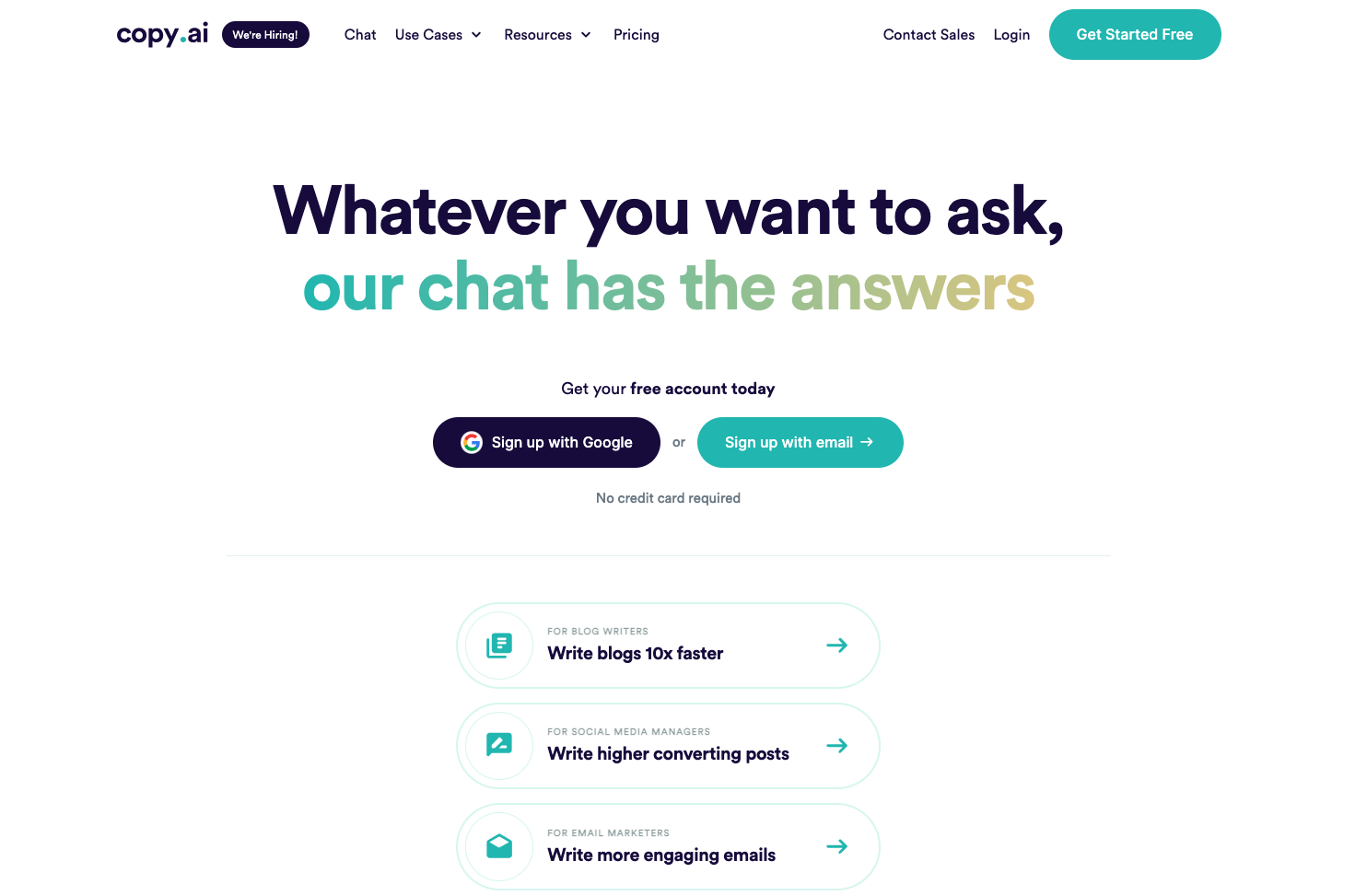
Copy AI has certainly made a name for itself in the AI industry. However, its fundamental functionality closely mirrors that of Jasper's - essentially serving as an OpenAI Wrapper. With this focus, it risks finding itself in a precarious situation. Our observations suggest that merely being another ChatGPT Wrapper might not suffice to stay distinct in this intensely competitive market.
Copy AI's Limitations and User Concerns
Just like many other tools, Copy AI is still at the stage of simply providing prebuilt content templates. This approach often results in generic output that may not meet user's specific needs or expectations. Additionally, while advanced AI tools are already leveraging GPT-4 or combining multiple other language models for optimal results, Copy AI primarily utilizes GPT-3.0 and GPT-3.5. The range of features offered by Copy AI remains quite limited, which could potentially hinder its ability to compete.
- Some users have mentioned being a bit disappointed about the whole "unlimited access to GPT 4" thing, which apparently drops to GPT 3 after just a few minutes of use.
- This mismatch between what's advertised and what you actually get has made a few users call the service a scam.
- These kind of bummer experiences not only make you question if you can trust Copy.ai, but might also discourage newbies from giving it a try.
The main use of their service is still through their AI chat, which produces below average output compared to using ChatGPT directly. This serves as another example of how they need to improve and diversify what they offer to stay relevant and competitive in this rapidly evolving market.
Copy.ai's User-Friendly Design
Despite these setbacks, it's important to note that Copy AI does have a really good user-friendly design - something that holds significant importance in our digital age where the usability of a product can make or break its success. Yet, there remains a pressing need for them to improve and adapt their offerings to stay useful and competitive in the rapidly evolving world of AI writing tools.
Rytr
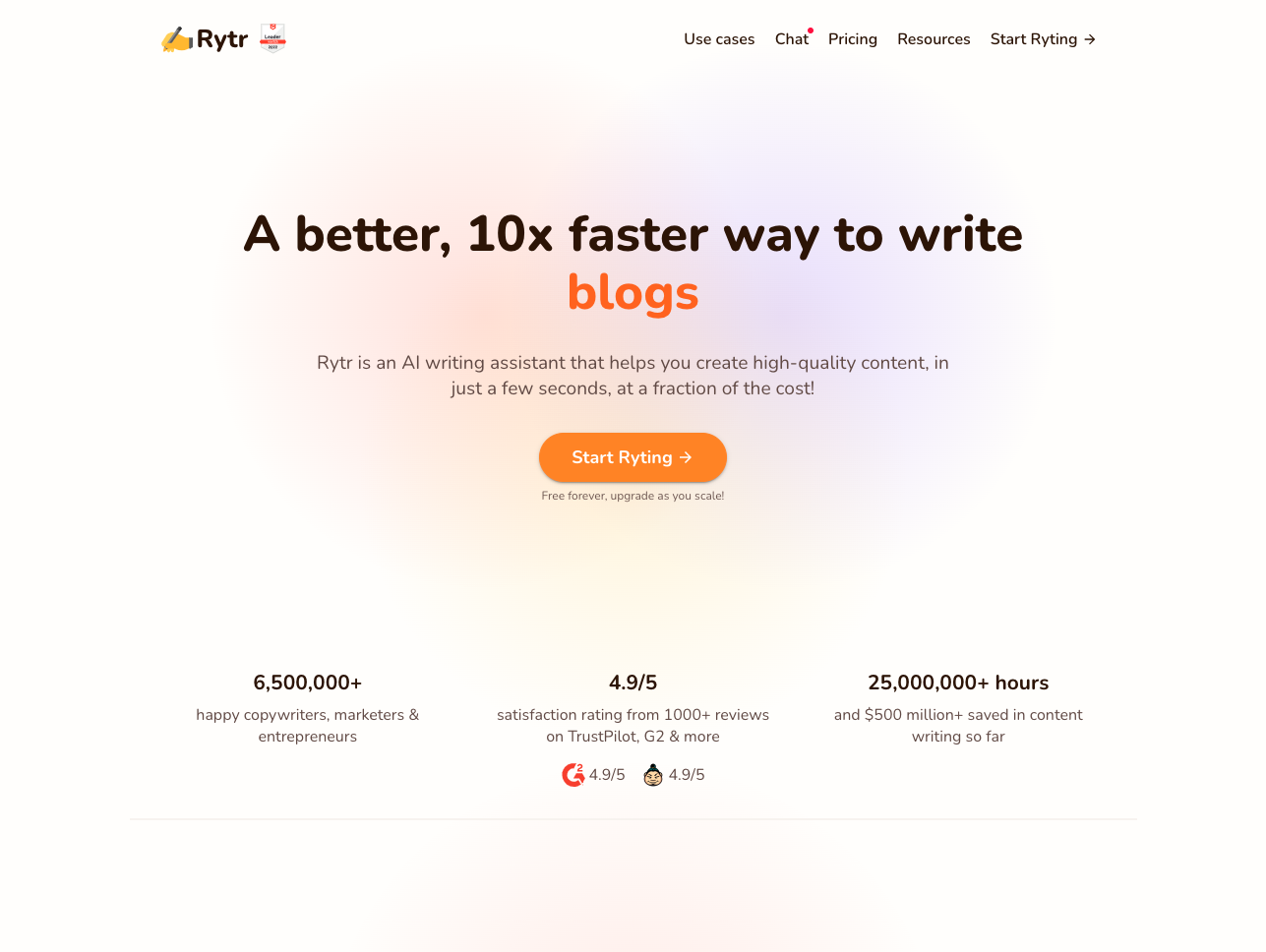
Rytr is another system that's trying to become popular in the industry. Even though it's getting some attention, Rytr depends a lot on GPT-3 technology to create its content - just like Jasper did. This suggests that it might run into the same problems as Jasper if they don't change or enhance what they offer.
Rytr also belongs to the group of tools that offer ready-made content templates and produce ordinary output. Its use of GPT-3, while more advanced systems are already using GPT-4 or a mix of several language models, could put it at a disadvantage. The lack of extra features makes these potential problems worse and might make it hard for Rytr to compete in this fast-changing market.
On top of this, Rytr’s tool has very limited features which are much lower than average compared to other AI tools out there. It not only lacks variety in services but the quality of the services it offers isn't great. This shows that Rytr needs to not only add more functions but also make what it currently offers better to stay relevant and competitive.
When you first start using their tool, you might feel a bit let down because it doesn't have a lot of bells and whistles. Just focusing on fancy ads instead of making a great product might not be the best way to keep winning in the long run.
Quillbot
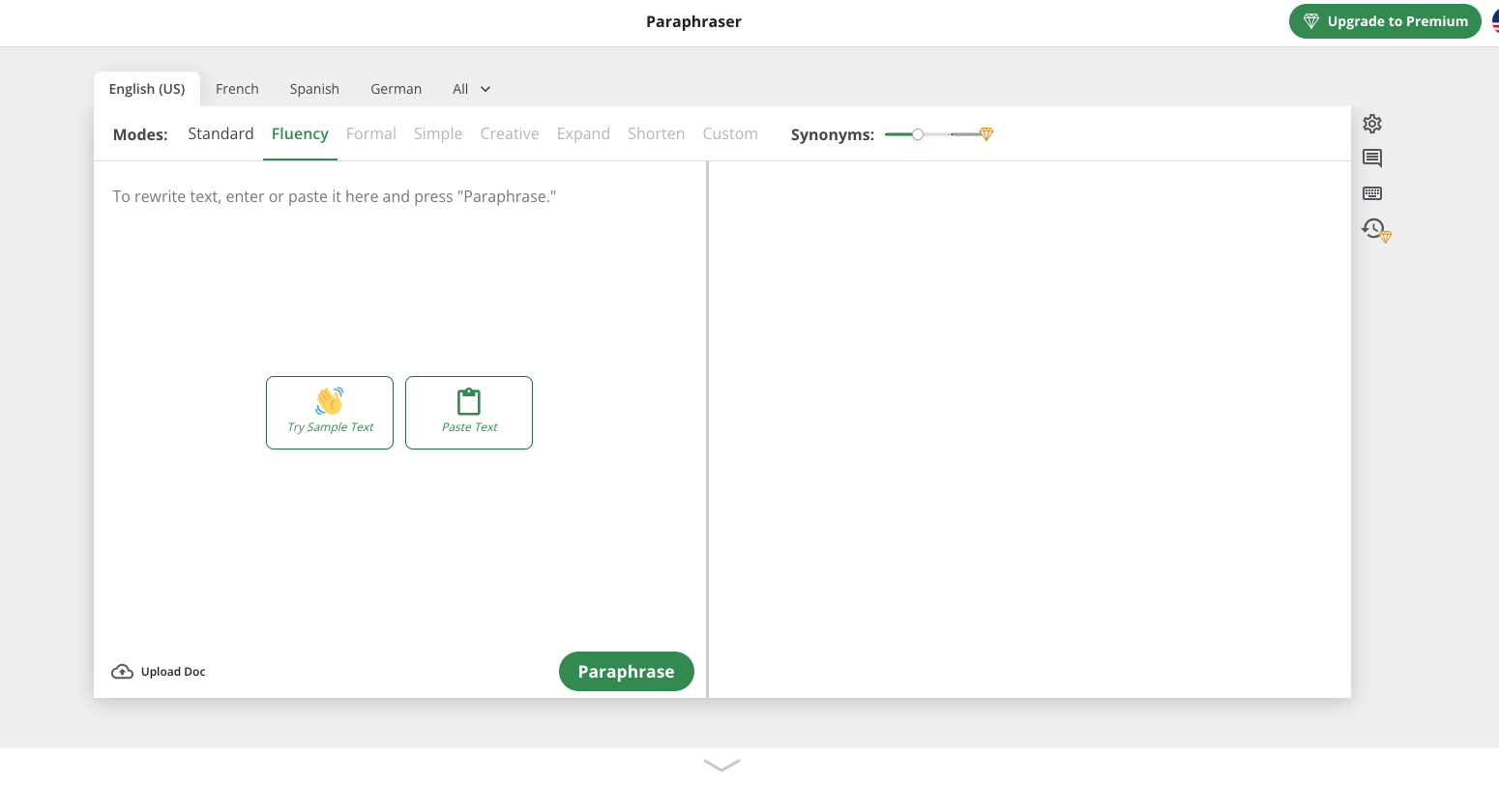
Quillbot is another tool in the AI writing field. It's mostly good at changing words in content. But, only focusing on this might limit its ability to grow and take on more. This is especially true when compared to rivals like Grammarly and other AI tools that have lots of features.
Each of these tools has something good to offer. But without making a big change or coming up with new ideas beyond just using GPT-3, these tools could struggle against tough competition and users wanting different things. Adding to that, focusing solely on paraphrasing text can limit their versatility and potential for growth in the vast AI content creation space.
AI Writers That will probably continue to stay
Transitioning from Jasper AI, the AI content creation market is very competitive, but a few platforms are standing out as leaders. These top players are not just getting by in the tough competition, they're surpassing expectations by breaking old rules, setting new standards, and moving forward quickly. Interestingly, these Jasper AI alternatives are quickly changing from just being renamed versions of ChatGPT. They're showing an amazing level of flexibility and imagination that sets them apart in the exciting field of AI-driven content making.
Writesonic - Still standing strong
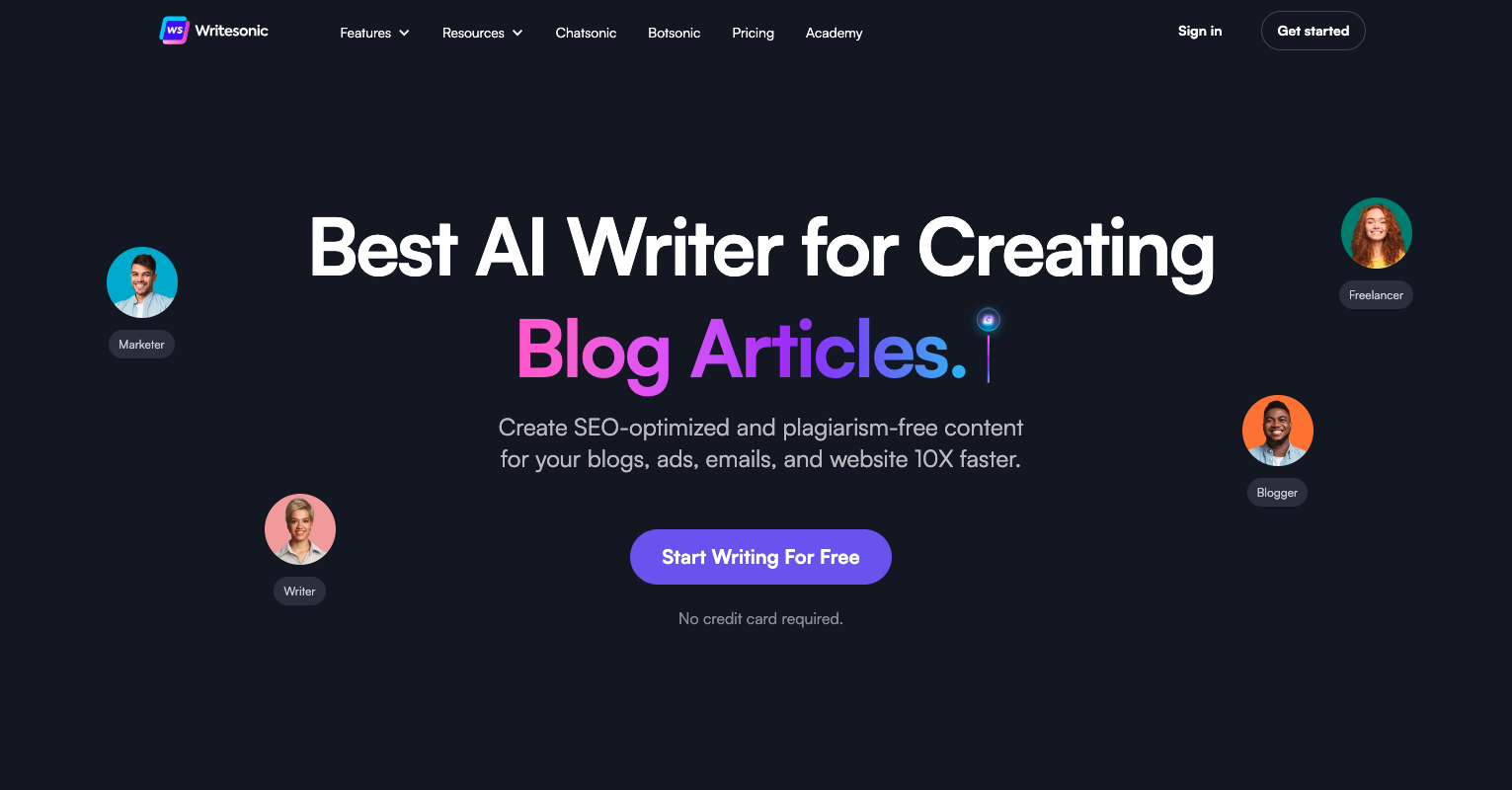
WriteSonic, a rising name in the AI content creation space, started just like Jasper AI. It was ChatGPT in disguise under a different name, well I guess it still is. However, they are trying to become more than just an AI writing tool, similar to Junia AI's path.
Writesonic offers many features, like the AI Article & Blog Writer, Paraphrasing Tool, Text Expander, Article Summarizer, Product Descriptions, Facebook Ads, Google Ads, Landing Pages and more. However, these tools can sometimes feel generic as they are basically ChatGPT packaged differently.
Even though Writesonic focuses on customization and user needs. But some people wonder if it's just repackaging ChatGPT under a new name or truly using AI to solve user problems effectively. Writesonic is trying hard to stand out in the crowded AI landscape by not being just another AI writing tool but a complete chatbot builder for businesses.
Writesonic is not just reusing existing technology but also adding more features to cater better to business needs.
The features provided by Writesonic are not stripped-down versions of ChatGPT. They are unique tools built with specific purposes in mind.
Unlike its competitors, Writesonic focuses on meeting user needs and uses AI as a solution that effectively addresses users' challenges. Users can customize their chatbot to fit their needs perfectly.
While some people may question Writesonic's originality and suggest it may be covering up its lack of innovation - the company remains committed to innovation and customer satisfaction. After all, survival in this competitive market isn’t just about rebranding; it’s about creating real value for customers.
To sum up, Writesonic is making its own way in the AI market by being a business-focused chatbot builder. Its dedication towards customization and user-focused solutions make it stand out amongst competitors and promise future growth.
For Writesonic to keep moving away from repackaging existing technology and developing unique features is critical. Its success could depend on its ability to create a unique identity within the crowded AI market.
This shows us an important lesson: you can't survive by simply rebranding ChatGPT under new names with minor changes. The future of Writesonic depends on its ability to offer big features that solidify its position beyond these initial offerings. Only time will tell if it can rise above being just another generic player or if there are better WriteSonic alternatives available.
Writer.com
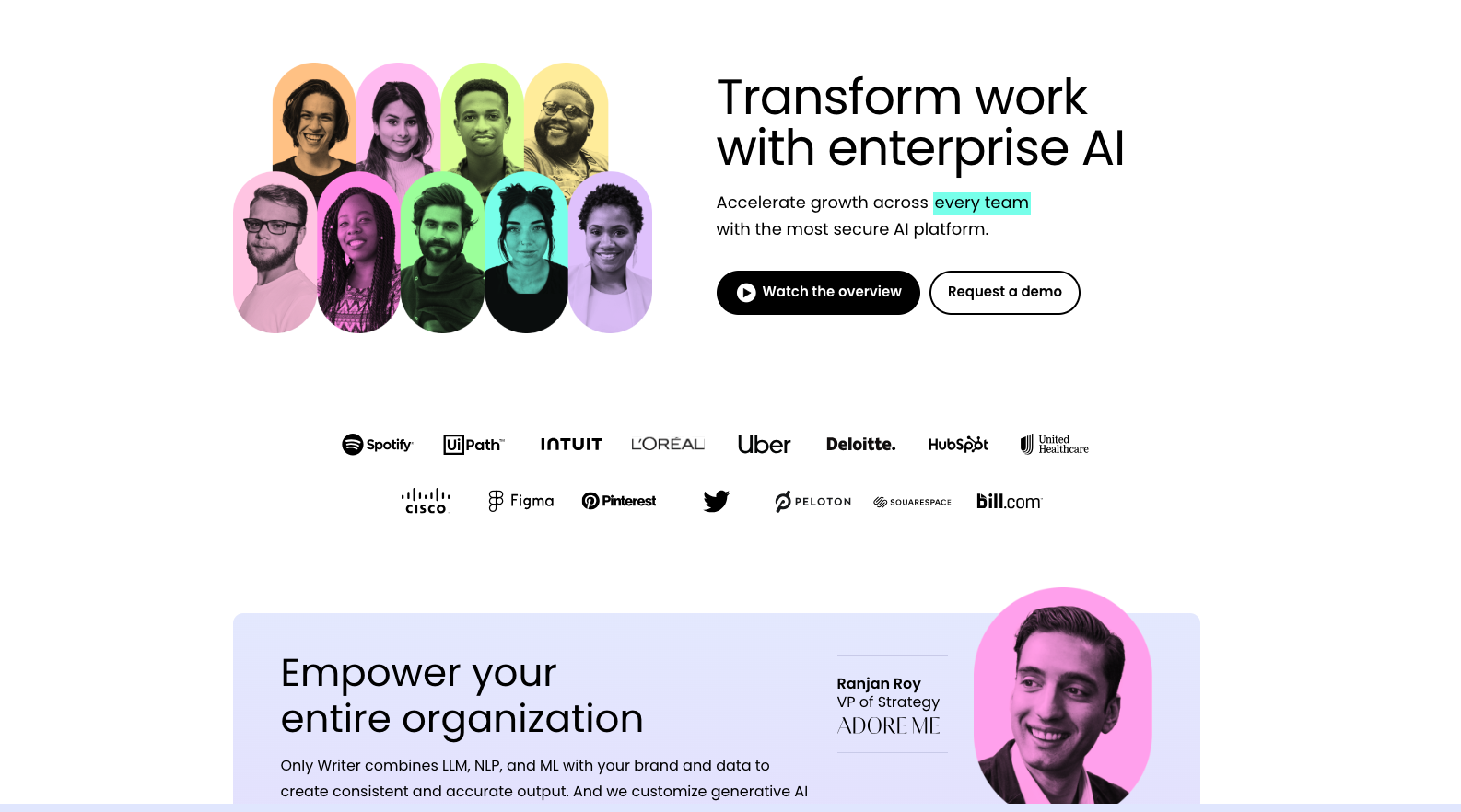
Writer.com is a strong player in the field of content creation using artificial intelligence (AI). It gives businesses a full package to manage and improve their written content using powerful AI tools. These tools can perform many tasks, from writing emails and creating social media posts to drafting articles or blogs.
Unlike other AI writing tools that use OpenAI, Writer.com stands out because it uses multiple AI language models. This approach, similar to Junia.ai's method, gives the best results. Additionally, Writer.com provides its users with a variety of tools to enhance their content. From fixing grammar mistakes to suggesting more interesting wording, the platform ensures that every piece of text meets the highest quality standards.
Even though many AI startups face challenges, Writer.com keeps growing because it stays focused on innovation and customer happiness. Its commitment to user-focused solutions and developing unique features has secured its place in the busy AI market.
The future success of Writer.com largely depends on its ability to continuously introduce significant features that strengthen its position in the market. As long as it stays committed to meeting customer needs and pushing technological boundaries, nothing can stop Writer.com from being more than just another ordinary player in the AI content creation industry.
Longshot AI
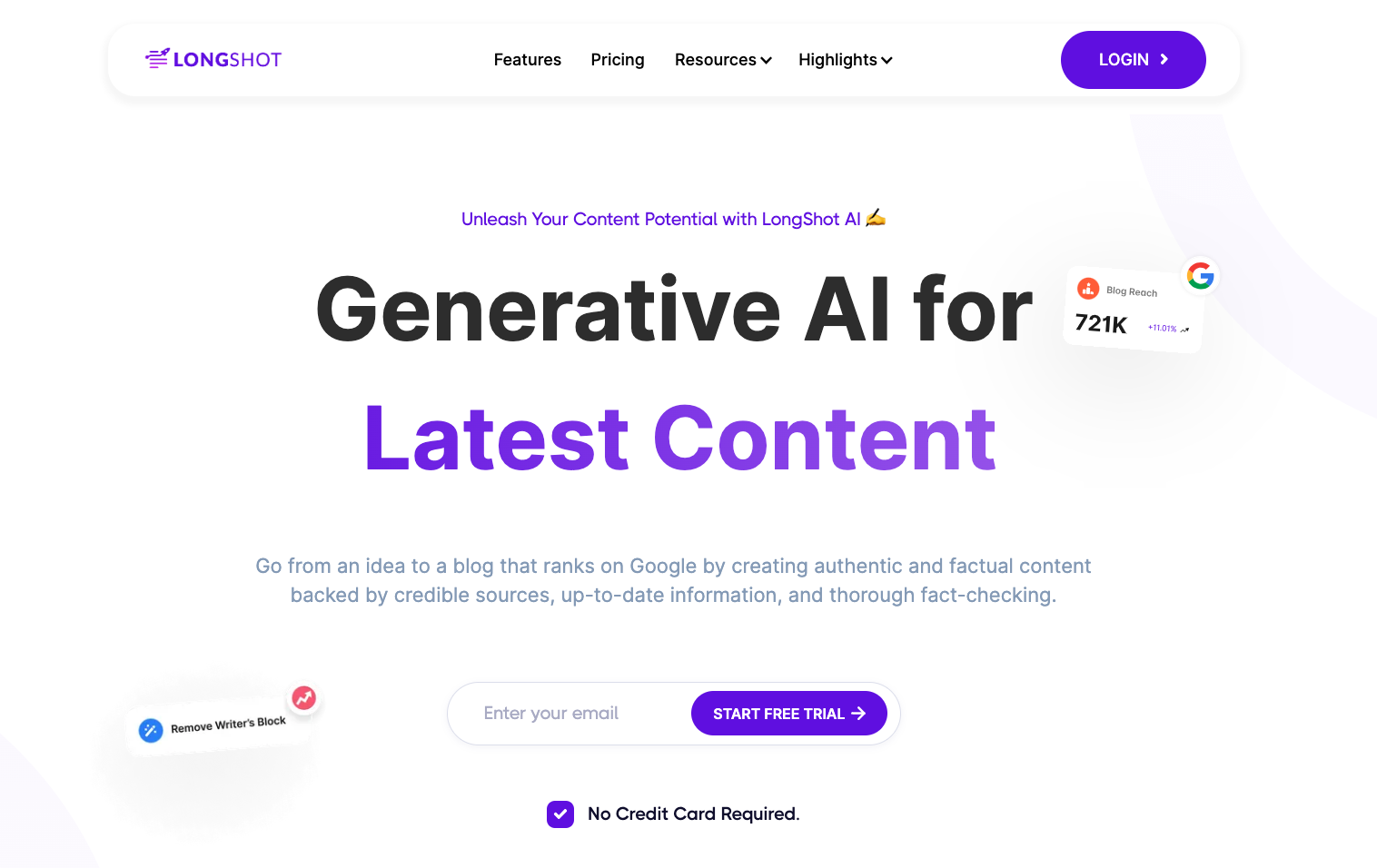
Longshot AI, an OpenAI-based software, doesn't merely use the OpenAI API in its original state. Instead, they've made a conscious effort to adapt the system specifically for creating content rooted in facts.
In the world of artificial intelligence, false information can spread like wildfire. This often happens when an AI system uses up all the training data it was given by humans. It's like a student who has finished all their textbooks and still has questions - they might start to guess the answers and get things wrong. So, when the AI runs out of human-given data, it can start to get confused and produce unpredictable, and often incorrect, results.
This is why it's so crucial to have factual information when creating content with AI. Just think of it as feeding the right 'food' or data to your AI 'student'. The more accurate and rich the 'food', the smarter your AI becomes, giving you reliable and trustworthy results. This is especially important for businesses who use AI for tasks like writing articles or reports. One small piece of incorrect information can damage a company's reputation or mislead customers. So always remember - garbage in, garbage out!
Longshot AI has set its focus on this critical aspect of the niche. Although they still have considerable progress to make – their content output is currently average at best – they are certainly moving in the right direction.
The team behind Longshot AI has invested resources in developing additional layers of technology on top of the base OpenAI's API, rather than just being a ChatGPT twin. This layer is carefully crafted to focus on producing factual and precise content, guaranteeing a high level of dependability and trustworthiness in the outputs it generates.
In doing so, Longshot AI distinguishes itself from several other platforms that lean heavily on OpenAI's GPT models' built-in capabilities. This commitment to creating factually accurate content has allowed Longshot AI to carve out its unique space within the competitive landscape of AI-driven content creation.
Contentbot - AI-Powered Content Automation
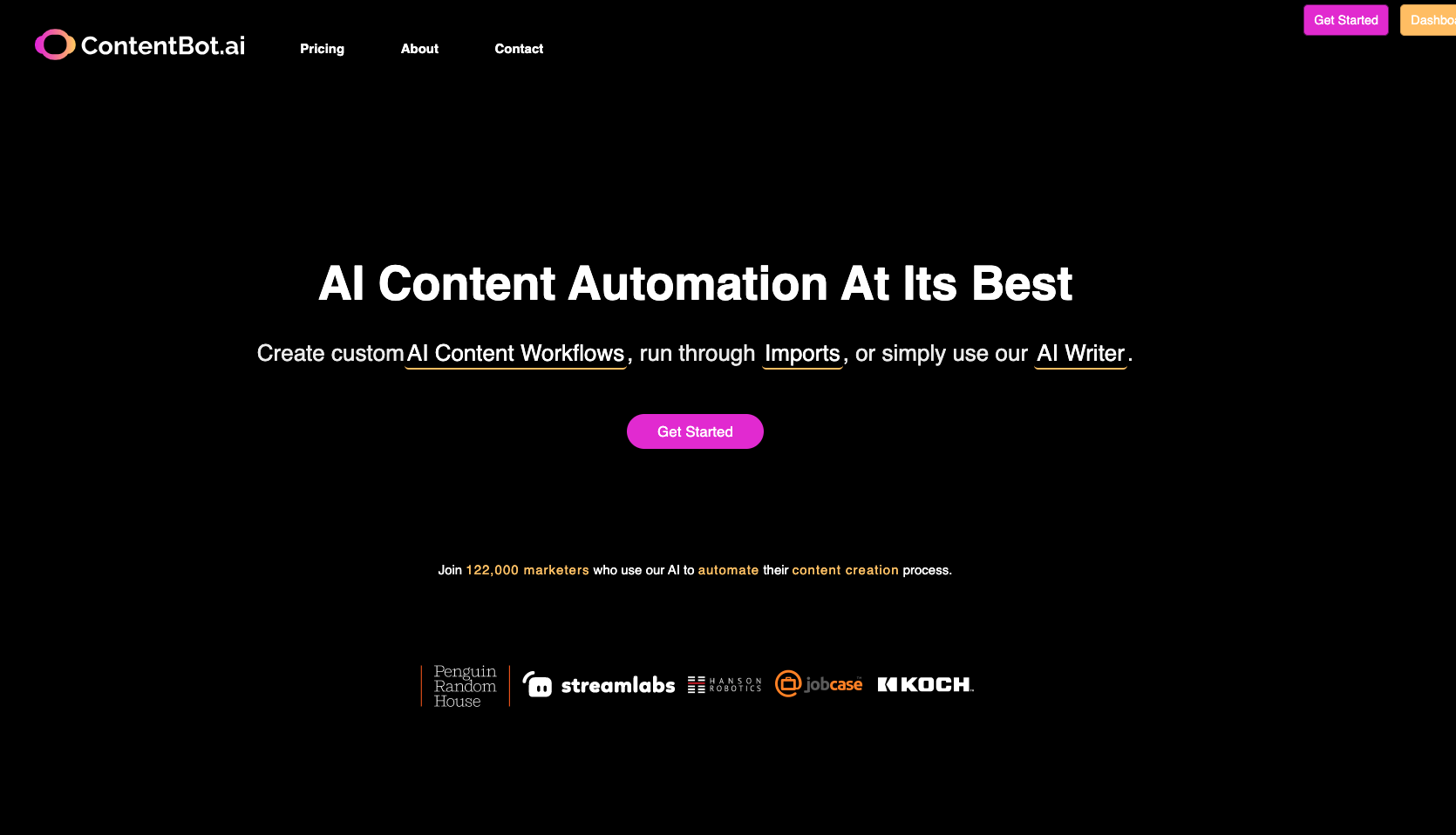
Consider this: zeroing in on a specific niche can incredibly enhance your product's appeal. Take, for example, Contentbot – a platform that has effectively carved its niche in content automation and is doing an exceptional job at it. This strategy mirrors the success of Longshot AI, which has excelled by concentrating on its core competencies.
Contentbot aims to make content creation a breeze with their AI-powered tools. They offer an impressive array of features that automate various aspects of the process. From drafting blog posts to igniting creative ideas, and even assisting with copywriting – they've got it all covered.
The team behind Contentbot recognizes the potency of focusing on one aspect and mastering it. By dedicating all their resources to automating content creation, they've developed a product that is not only powerful and user-friendly but also stands distinctive in the crowded sphere of AI-driven content creation.
Advice for Startups Building AI Content Creation Platforms
Despite the exciting possibilities of AI content creation, there are challenges that startups need to navigate. Here's some advice for those considering launching their own AI writing tool.
Understanding the Challenges
Customer Retention Challenges Faced by AI Tools
A significant number of AI tools, including Jasper AI and Mutiny, have grappled with issues related to low customer retention rate. This situation is usually attributable to three principal factors:
- Lack of Differentiation from Competitors
- Failure to Focus on Niche Markets
Let's delve into these factors in more detail.
1. Lack of Differentiation from Competitors
In the fast-paced world of AI technology, it's crucial for a product to be unique so it can stand out from rivals. However, companies like Jasper AI and Mutiny are finding this tough. They're up against stiff competition from both new and existing businesses like OpenAI's ChatGPT in the market for software that uses big language models to change text.
Jeremy Crane, who was once the head product person at Jasper AI, left amid this fierce competition, highlighting the struggle to be unique.
Even though they have raised a lot of investment money, these companies often face difficulties unless they can establish a clear advantage in computer power and data - something that's hard to find for many.
A big part of their trouble comes from how easy it is for others to copy their tools. Advanced tech and knowledge are becoming easier to get every day, which means even small startups can build similar platforms. Since these tools don't have special features to make them different, they end up stuck in a loop of trying to beat rivals who offer pretty much the same thing.
On top of this, improving how visible they are on search engines (SEO) is another area where these companies often slip up. SEO is crucial for reaching more people and getting noticed online today. But these platforms often fail to include advanced SEO methods in their content making process. This mistake results in their content not showing up high on search engine results, limiting the number of users they reach and potential customers.
By understanding and dealing with these problems - ease of copying, lacking SEO, and making it less easy for someone else to replicate your tool - AI content making platforms can greatly better their uniqueness from competitors, ultimately increasing their chances of doing well in this competitive market.
2. Failure to Focus on Niche Markets
A common mistake made by AI companies is not focusing on a specific group of customers and their particular needs. Instead, they try to cater to a larger audience. This method not only reduces the usefulness of their AI tools but also makes it harder for them to create strong unique features or "moats" that set them apart from competitors.
This lack of focus can lead to several problems:
- Less Effective: When an AI tool tries to do too many things for many different users, it usually can't do any one thing really well. This is like being a jack-of-all-trades but master of none.
- Hard to Beat Competitors: If these AI tools don't focus on a specific area, they miss the chance to create unique features that can help them stand out against competitors.
- Losing Importance: Without a clear aim, these tools can quickly become less important in the market because they aren't able to meet users' specific needs very well.
A good example of this problem is Jasper AI, an AI writing helper. Even though it seemed promising at first, Jasper AI started losing importance because it couldn't keep up with the high-quality work of its competitors.
- Not as Good as ChatGPT: People thought the quality of content from Jasper AI wasn't as good as what ChatGPT could create.
- Didn't Specialize: This problem got worse because Jasper AI didn't specialize and focus on a specific group of customers.
By not figuring out and focusing directly on a specific group of customers, Jasper AI fell behind in the competitive world of AI writing tools. This shows how important it is for AI companies to not only make advanced technology but also make sure it's exactly right for their customers.
By focusing on certain customers and solving their particular problems, AI platforms can greatly improve their usefulness and competitive position.
Creating a Successful AI Content Creation Platform
If you're thinking of making your own AI writing tool, here's some advice.
1. Make Your Interface and Technology Stand Out
The look and feel of your product is crucial. It's the first thing users see, and it leaves a lasting impression. Don't undervalue a unique and easy-to-use interface. It should be much better than what's already available, so much so that others can't simply copy it.
"The future belongs to those who believe in the beauty of their dreams." - Eleanor Roosevelt
Just like any dream worth chasing, your technology needs to be new and different, something that sets you apart from the crowd. Before adding language models like LLMs or GPT-3.0, your technology must be significantly better. Don't just copy what's already out there, aim for something new.
2. Use User Data Wisely
User data can offer valuable insights. Use these insights to make your AI writer more tailored to specific users than general-purpose language models.
"Data is a precious thing and will last longer than the systems themselves." - Tim Berners-Lee
Use data smartly while respecting privacy laws and user worries about data safety. This way, you'll meet users’ needs and build trust by showing them you handle their data responsibly.
3. Do More Than Just Wrap ChatGPT
While ChatGPT wrappers like Jasper AI have a role, they often don't provide extra value to users beyond what OpenAI offers through its APIs. To make your product stand out:
- Add features that ChatGPT wrappers don't provide.
- Find and fill gaps left by existing tools.
- Aim for something new rather than copying others.
4. Show Your Unique Value
What makes your AI writer valuable? What issues does it solve? If you can answer these questions clearly, you're on the right path.
"Innovation distinguishes between a leader and a follower." - Steve Jobs
Remember, value isn't always about being cheaper or faster (though these factors are important). It's about offering real benefits that can't be easily copied or replaced by another tool.
5. Know Your Users
To build an effective AI content creation platform, you need to understand who your users are:
- What do they need?
- What problems do they have?
- How can your tool help them?
By understanding these things, you'll be better prepared to design a product that effectively meets user needs.
"You’ve got to start with the customer experience and work back toward the technology — not the other way around." - Steve Jobs
As we explore this exciting world of AI content creation platforms, let’s keep these tips in mind – create unique interfaces, use user data responsibly, go beyond just wrapping ChatGPT, focus on real value creation that can't be easily copied, and understand our users well. Knowing that success doesn't come easy should keep us humble as we aim for greatness!
Conclusion
So, we've looked at different AI content creation tools, tested them with some unique standards, and even offered advice for new companies interested in these AI-powered resources.
From the difficulties of Jasper AI to the triumphs of Junia AI and WriteSonic, it's obvious that not all AI content creators are the same. Some might be unstable, while others are strong with a special mix of new user interface/user experience, technology, and using user data.
When looking at AI tools like Copy AI, Rytr, Quillbot and similar ones, we've noticed they all have their good and bad points. However, what makes a tool brilliant instead of average is its ability to stand out. It’s not about being just another text generator; it's about being 10 times better.
"Being 10 times better - that's when exciting things happen."
Using Junia as an example, we saw how a tool can have powerful abilities like SEO research, AI Image creation, diverse types of content and more. These special features make this tool useful for bloggers, marketers and business owners.
"Strong features are the key to successful AI writing tools."
Creativity is important in the world of AI content creation. And when it comes to creativity, there's no space for laziness. Growing technology needs to be fully used to create something truly groundbreaking.
"Creativity isn't one-off; it's ongoing."
As we think about what's next for AI writing tools, we can look forward to more than just better text generation. We're thinking about:
- Interactive features that give real-time editing advice
- Combined solutions that fit easily into our daily tasks
- Stronger SEO capabilities
- Less manual work
"The future is positive and full of opportunities."
Of course there will be problems along the way – that's life. But remember this: every problem faced is a chance for growth and creativity. For those willing to take risks and stretch limits, the rewards can be huge.
"Problems? Bring them on! They're just steps towards success."
So hold on everyone! The next part in the story of AI content creation hasn't been written yet. And who knows? The next big thing could be very close. From advanced chatbots to high-quality blog articles made in seconds – with AI helping us, we're only limited by our ideas!
"There's no limit when there are already footprints on the moon!"
And with that thought-provoking comment, let's finish up! Until next time... Keep exploring. Keep being creative!


